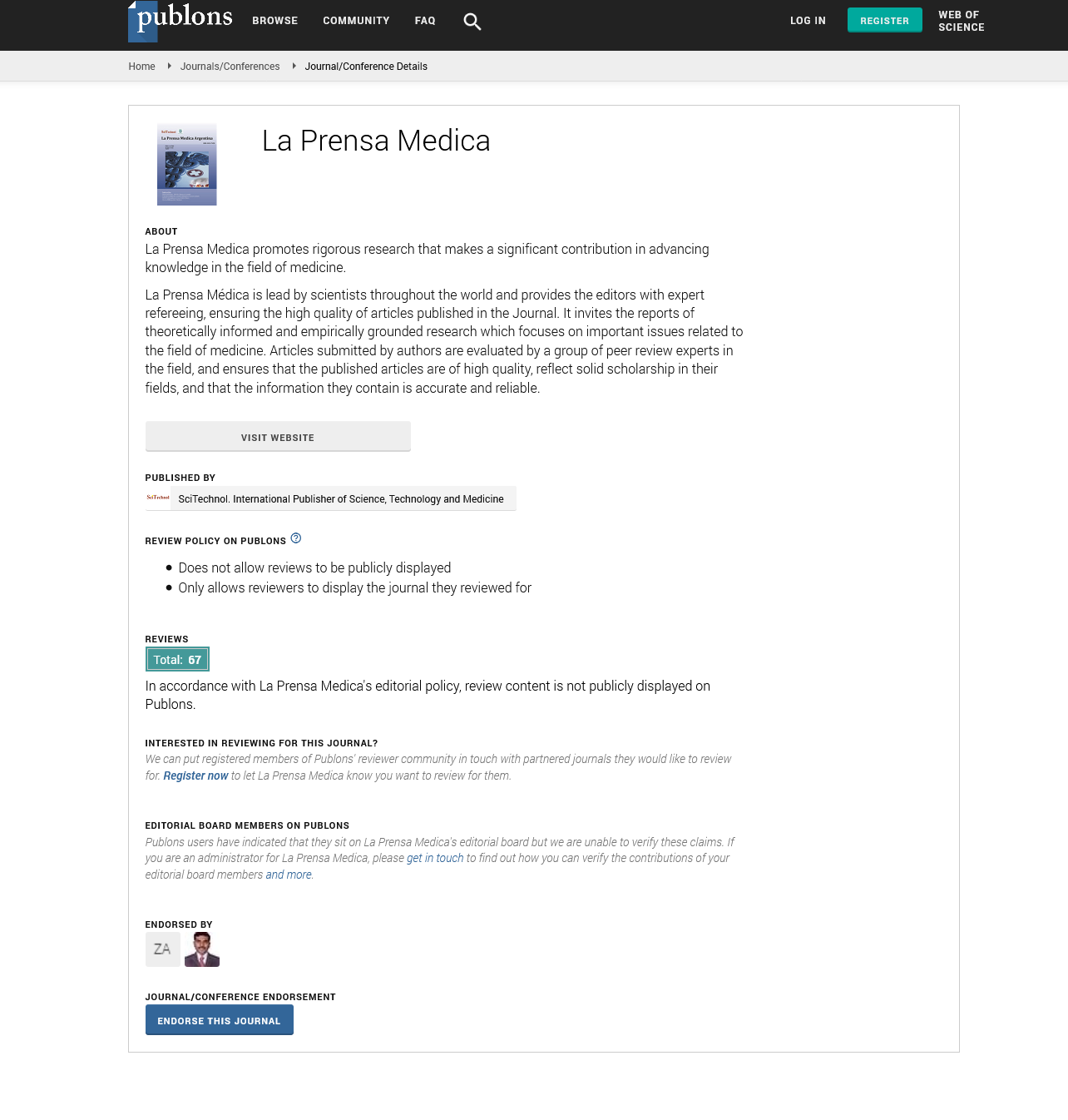Opinion Article, La Prensa Medica Vol: 108 Issue: 1
Importance of Orthopaedic Therapy in Cleft lip and Palote Fissure Patients
Chomienne Deleuze *
Department of Otolaryngology, University of Michigan, USA
Corresponding Author: Chomienne Deleuze
Department of Otolaryngology, University of Michigan, USA
E-mail:Chomienne@gmail.com
Received date:03 January, 2022, Manuscript No. LPM-22-57661;
Editor assigned date: 05 January, 2022, PreQC No. LPM-22-57661 (PQ);
Reviewed date: 19 January, 2022, QC No LPM-22-57661;
Revised date: 24 January, 2022, Manuscript No. LPM-22-57661 (R)
Published date: 29 January, 2022, DOI: 10.4172/0032-745X.1000127
Citation: Deleuze C (2022) Importance of Orthopaedic Therapy in Cleft lip and Palote Fissure Patients. La Prensa Medica 108:1.
Keywords: Prenatal yoga Physiotherapy, Integrative yoga therapy, Geriatric yoga therapy, Aerodynamics, Yoga for athletes, teens and children
Description
Stem cells are unspecialized cells that become the specialized cells that structure the varied kinds of tissue within the human body. They are characterized by the facility to renew themselves through mitotic cell division and differentiating into a various range of specialized cell types. They're vital to the event, growth, maintenance, and repair of our brains, bones, muscles, nerves, blood, skin, and other organs. Stem cells are found altogether folks, from the primary stages of human development to the highest of life. Vegetative cell research holds tremendous promise for the event of novel therapies for several serious diseases and injuries. While stem cell based treatments are established as a clinical standard of take care of some conditions, like hematopoietic vegetative cell transplants for leukemia and epithelial stem cell-based treatments for burns and corneal disorders, the scope of potential vegetative cell -based therapies has expanded in recent years because of advances in somatic cell research.
Set of Diagnostic Criteria
Recently those scientists have understood stem cells tolerably to believe the probabilities of growing them outside the body for long periods of some time. Thereupon advance, rigorous experiments are often conducted, and thus the likelihood of manipulating these cells in such how those specific tissues are often grown is real. A vegetative cell could also be a non-specialized, generic cell which can make exact copies of it indefinitely and should differentiate and produce specialized cells for the numerous tissues of the body. Stem cells are cells found in most, if not all, multi-cellular organisms. They're characterized by self-renewal and potency the facility to renew themselves through mitotic cell division and differentiating into a various range of specialized cell types2. They're vital to the event, growth, maintenance, and repair of our brains, bones, muscles, nerves, blood, skin, and other organs. Laboratory studies of stem cells enable scientists to seek out about the cells' essential properties and what makes them different from specialized cell types. Scientists are already using stem cells within the laboratory to screen new drugs and to develop model systems to review normal growth and identify the causes of birth defects. Research on stem cells continues to advance knowledge about how an organism develops from one cell and therefore the way healthy cells replace damaged cells in adult organisms.
Surgical Treatment
Research is one of the foremost fascinating areas of up so far biology, but, like many expanding fields of scientific inquiry, research on stem cells raises scientific questions as rapidly because it generates new discoveries. Over the past year, adult stem cells are used either exclusively or alongside other treatments to understand significant "healthcare benefits" for sufferers of the every tissue of human body the assembly of cardiomyocytes from induced pluripotent stem cells presents great potential for patient-specific regenerative therapies and cardiotoxicity drug evaluation. The successful translation of iPSCs to those fields requires the event of strong bioprocesses capable of producing CMs in high quality, quantity and purity. Traditional protocols for CM differentiation of iPSCs lack control and robustness and are thus inefficient. Furthermore, efficient cryopreservation and hypothermic storage strategies are a requirement, as cell banking and transport could also be a prerequisite for clinical and industrial applications. The foremost aim of this thesis was the evaluation of varied bioreactor systems for the assembly and purification of miPSC-derived CMs. Novel strategies for CM cryopreservation were tested. Also, CMs were used to study the cardioprotective effect of antioxidant compounds. The wave bioreactor was the foremost suitable system for CM differentiation, allowing high differentiation yields and thus the assembly of clinically relevant numbers of CMs, simultaneously reducing bioprocess duration as compared to stirred tank bioreactors. Produced CMs presented typical structural and functional features. Moreover, and DMSO revealed to be suitable solutions for cryopreservation of miPSC-derived CMs, achieving high cell recoveries after thawing. Additionally, HypoThermosol FRS enabled hypothermic storage of CMs for up to 7 days. Finally, it had been shown that CMs derived from miPSCs present potential to be utilized within the event of cardioprotective assays. This work demonstrates the establishment of a completely integrated bioprocess, capable of producing high quality miPSC-derived CMs in environmentally controlled bioreactors and ensuring efficient cryopreservation and storage of the produced cells. Hopefully, the knowledge acquired with this work are often translated to human iPSCs, presenting a relevant breakthrough towards the appliance of human CMs to clinical and industrial applications, like cardiac regeneration, disease modeling and cardiotoxicity and cardioprotective cellbased assays.
 Spanish
Spanish  Chinese
Chinese  Russian
Russian  German
German  French
French  Japanese
Japanese  Portuguese
Portuguese  Hindi
Hindi 

